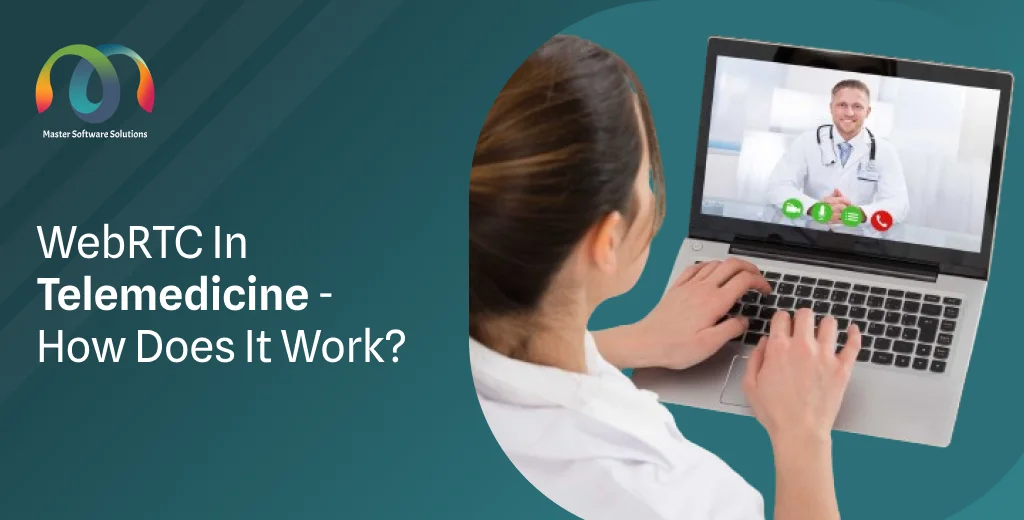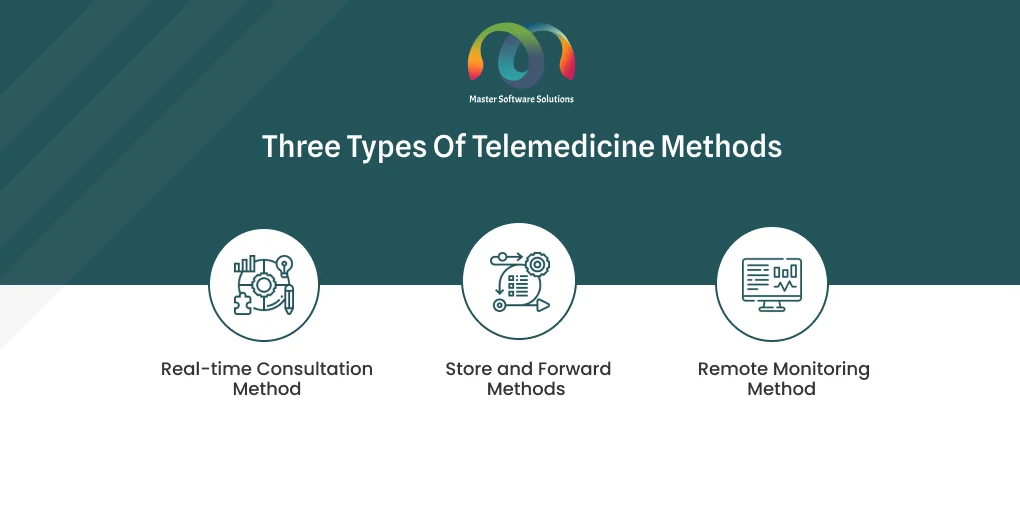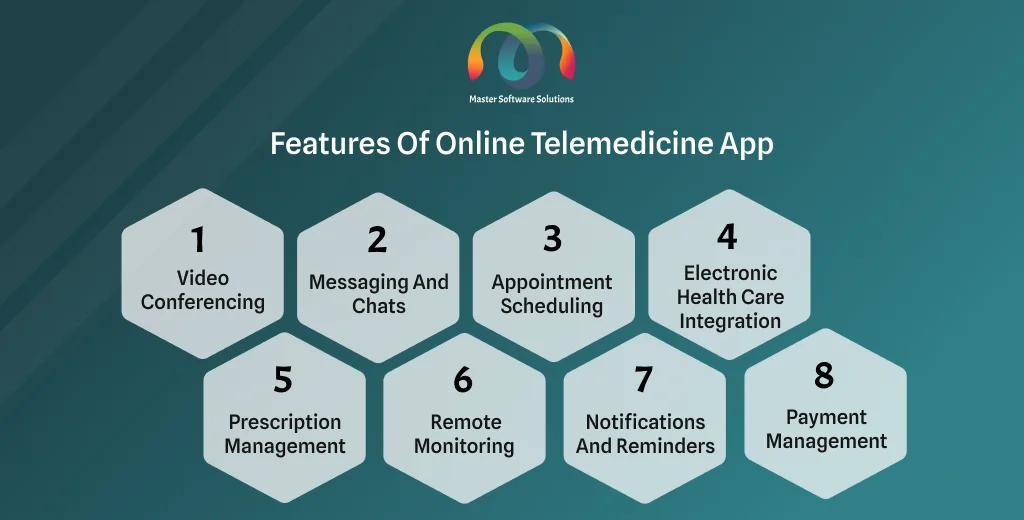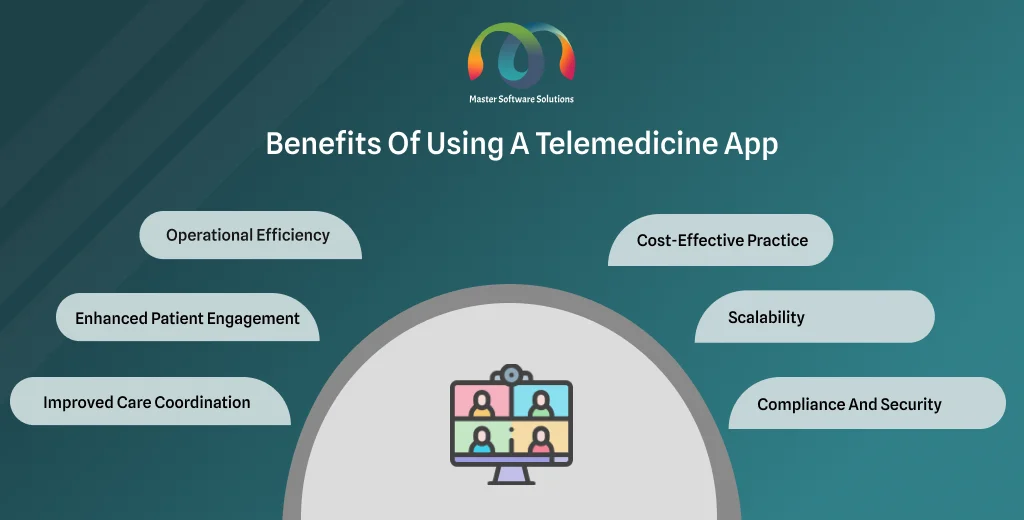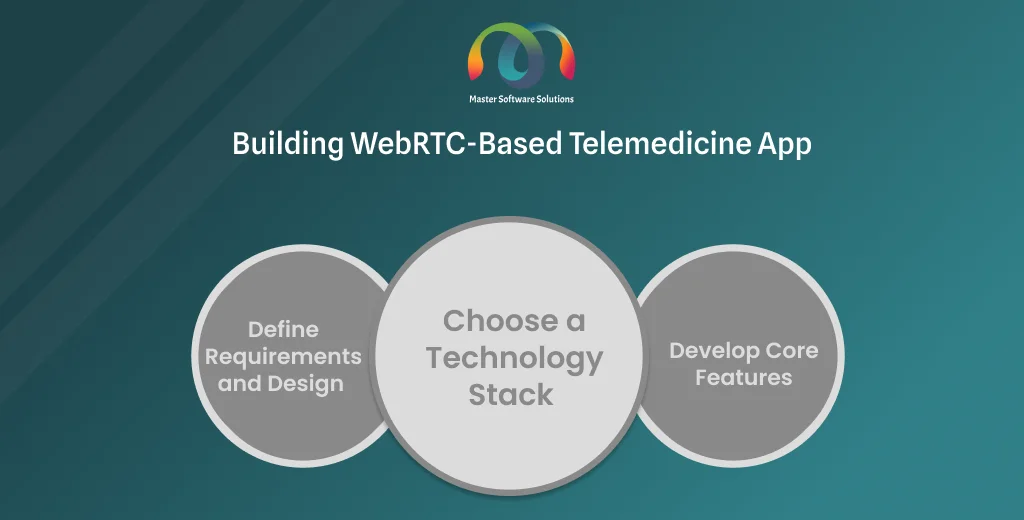WebRTC in telemedicine has revolutionized the way healthcare operates. telemedicine became highly popular, especially during COVID-19 when visiting healthcare facilities was not an option. It enables audio, video, and arbitrary data sharing.
With this, many tools were designed to enhance the convenience and ease of assessing, diagnosing, and treating patients.
This blog will cover:
What is WebRTC?
WebRTC is an open-source technology that helps developers design real-time communication web and mobile applications via simple APIs. The technology supports audio, video, and data sharing through applications without installing or downloading third-party plugins or software.
The WebRTC development solutions are used in various industries, including, healthcare, e-learning, gaming and entertainment, and corporate collaboration. This blog will explore the use of WebRTC in healthcare as “telemedicine,” how it works, its benefits, and telemedicine using WebRTC solution development.
What is Telemedicine?
Telemedicine has become more relevant during COVID-19 when visiting hospitals was not an option. It includes consulting doctors online via web or mobile applications on audio or video calls. It enables healthcare providers to diagnose, treat, and monitor patients without visiting the patient in person.
This kind of consulting uses video conferencing, mobile apps, and other internet-based tools to offer various medical services. There are three types of telemedicine methods, the real-time consultation method, the store and forward method, and the remote monitoring method.
Real-time consultation method
It includes an interactive session between healthcare providers and patients. Healthcare providers evaluate patient’s medical histories and symptoms to make diagnoses. This method uses video conferencing, phone calls, or instant messaging. It enables direct communication, allowing the healthcare provider to assess, diagnose, and treat in real time. The method is used for primary-care consultations, specialist consultations (dermatology), and mental health services
Store and forward methods
This method involves collecting patient data that healthcare is working on and sending it to a specialist, depending on the medical information/ condition the patient is facing. For example, it is used in dermatology to review skin conditions, in radiology to interpret X-rays and MRIs, and in pathology to analyze biopsy samples.
Remote monitoring method
The method involves digital services to monitor the patient’s health in real-time or over a specified period. This service is generally used when the patient is at high risk, e.g., heart patients or patients with chronic diseases who require continual tracking. This method is used for chronic disease management (diabetes or hypertension), post-surgery recovery monitoring, elderly care, fall detection, and monitoring vital signs in patients with cardiac conditions.
What is a Telemedicine app?
A telemedicine app is a digital platform, that enables patients to connect with healthcare providers without visiting a medical facility. Telemedicine platforms allow healthcare providers to consult, diagnose, treat, and provide follow-up care to their patients via video conferencing, chat, and data monitoring. This provides patients with a comprehensive healthcare experience.
The Health Resources and Service Administration (HRSA) defined telehealth as “using electronic information and communication technology, providing healthcare treatment, medical education, clinical data management, and any medical system. It improves healthcare accessibility, minimizing the rate of missed appointments due to the unavailability of healthcare practitioners.
If we look at statistics by Fortune Business Insights, the global telemedicine market is expected to grow to $396.76 billion by 2027, with a CAGR of 25.8%.
In 2020, the telemedicine app development market exceeded $60.9 billion. According to a study, “the demand is anticipated to increase by 15.4% between 2022 and 2030.” The global telehealth software market is anticipated to grow from $6,010 million in 2022 to $14,200 million by 2030.
Features of using an online telemedicine app
The online telemedicine app offers robust features that enhance the accessibility, convenience, and quality of healthcare services. The key functionalities of these apps empower patients and healthcare providers, ensuring better health outcomes and an efficient healthcare delivery system. The key functionalities of telemedicine apps are:
- Video conferencing – The app provides real-time, face-to-face consultations between patients and healthcare providers. It ensures encrypted and private communication to protect patient confidentiality.
- Messaging and chats – The platform allows secure, instant messaging for consultations, follow-ups, and answers to patient queries. It enables patients to send messages and receive responses at their convenience.
- Appointment Scheduling – Telemedicine enables easy booking, rescheduling, and appointment cancellation. It syncs with personal calendars to send reminders and notifications.
- Electronic Health Care (EHC) integration – The app provides access to patient medical histories, treatment plans, and test results to the healthcare provider. It ensures that patient interactions and updates are documented and easily accessible.
- Prescription management – The telemedicine app allows doctors to prescribe medications and send e-prescriptions as arbitrary data to pharmacies electronically. It sends medication reminders to patients to remind them to take their medications.
- Remote monitoring – The application is connected to wearable devices, allowing healthcare providers to monitor body vitals such as heart rate, blood pressure, and glucose levels. It provides continuous monitoring and alerts healthcare providers about critical changes in body vitals.
- Notifications and reminders – The app sends alerts for appointments and follow-up visits. It provides patients with tips and information to manage their health conditions.
- Payment management – The application offers secure and flexible payment options for patients to pay consultation fees, copays, and other medical services. It auto-generates and sends invoices and receipts automatically.
Benefits of using a telemedicine app
Leveraging the functionalities of telemedicine apps has made healthcare services more accessible, efficient, and patient-centered. This technological advancement improves the quality of care and ensures a sustainable and scalable healthcare delivery model. The benefits of using a telemedicine app are:
- Operational efficiency – The telemedicine app helps you reduce administrative burdens through automated scheduling, billing, and documentation. It enables healthcare providers to see more patients in a shorter time frame.
- Cost-effective practice – It lowers maintenance costs for office spaces and on-site staff. It allows efficient patient flow and better resource allocation.
Enhanced patient engagement – The app maintains clear and continual communication with patients to stick to the treatment plan. It offers convenience and accessible options to increase patient satisfaction. - Enhanced patient engagement – The app maintains clear and continual communication with patients to stick to the treatment plan. It offers convenience and accessible options to increase patient satisfaction.
- Scalability – Telemedicine apps are highly scalable and enable providers to expand their practices without incurring additional infrastructural or administrative costs. It supports them in hiring remote healthcare professionals to increase their services.
- Improved care coordination – The application provides seamless access to patient health records, improving coordination between healthcare providers. It facilitates collaboration with other healthcare professionals to provide comprehensive patient care.
- Compliance and security – It ensures patient data is shared securely, maintaining compliance with healthcare regulations. It helps providers adhere to telemedicine regulations and standards.
How to build a telemedicine app?
Building WebRTC-based telemedicine app development solutions includes various steps, from defining requirements and choosing a tech stack to developing the core features. Below is a detailed guide that can help you through the process.
Define requirements and design
- Analyse requirements – Identify the key functionalities your patients and healthcare providers might need. Understand the regulatory compliance requirements.
- UI/UX design – Consider designing a user-friendly interface for patients and healthcare providers. You can develop the wireframes and prototypes using tools like Figma or Sketch.
Choose a technology stack
- Frontend – You can choose React, Angular, or Vue.js. languages for the application framework. For state management, you can prefer Redux (React), NgRx (Angular), and Vuex (Vue.js)).
- Backend – It has three parts – framework, database, and authentication. The backend framework uses Node.js with Express, Django, or Ruby on Rails. A database uses MongoDB, PostgreSQL, or MySQL. An authentication system uses Firebase authentication or a custom JWT-based solution.
- WebRTC libraries – The WebRTC libraries include a client-side and a server-side. The client side is built on SimpleWebRTC, PeerJS, or custom WebRTC implementation. The server-side is built on socket.io for signaling, and STUN/TURN servers for NAT traversal.
Develop core features
- User authentication – You should prefer to build a secure login and registration process for the patients and healthcare providers.
- Video conferencing – Use WebRTC APIs for real-time video and audio communication. You can use WebSockets or Socket.io.
- Chat and messaging – You can enable real-time messaging using Socket.io and a database to implement message history.
- Appointment scheduling – To allow appointment scheduling to integrate a calendar component. You can implement backend APIs to manage appointments.
- Integrate EHR – You can use APIs to integrate electronic healthcare systems. This ensures secure data storage and easy access.
- Prescription management – Allow e-prescription sharing with pharmacies and set reminders to ensure they do not forget to take their medicine.
- Remote monitoring – You can integrate the application with wearable devices for real-time health data monitoring. You can set alerts and notifications for abnormal readings.
- Notifications and reminders – You can use Firebase Cloud Messaging or Twilio to integrate notification and reminder APIs. It allows you to set appointment reminders and follow-up alerts.
- Payment processing – Integrate multiple payment gateways like Stripe or PayPal for secure and seamless transactions.
Master Software Solutions is an IT service-based WebRTC development company, having 6+ years of experience in WebRTC. We have 90+ dedicated tech professionals with great expertise and are tech-updated. To hire WebRTC developers, contact us and see how our tech professionals can help your business.
